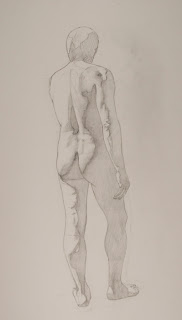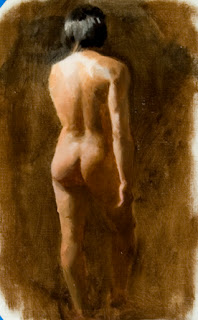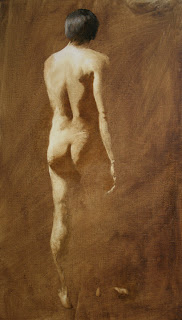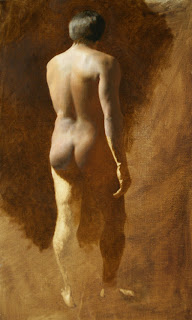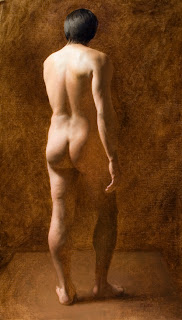Beneath the Surface: A Master Painter Examines the Clark's
Nymphs and Satyr
At the Clark Institute in Williamstown, MA, Graydon Parrish will be speaking this Sunday, March 11 at 3:00 pm.
In this special free lecture, artist Graydon Parrish will provide an
in-depth look at one of the Clark's most beloved paintings, William
Bouguereau's
Nymphs and Satyr.
The last quarter of the nineteenth century witnessed a complete
codification of the painter’s craft. The process of creating a picture
was not only systematic, but its continued rehearsal from the initial
sketch (or croquis) to under-painting (or ébauche) to the finished work,
reminded the painter of his training, his role in art history, and his
reputation among his peers and collectors. An artist's technique was
indivisible from his integrity, influence, and commerce. Few artists
have become as synonymous with technique as William Bouguereau. His name
has been both praised and derided because of this, and yoked with the
word "academic," itself a term of pride and scorn. Yet despite
Bouguereau's skill and troubles with his reputation, his approach was
workaday and straightforward, calm and steady.
In his lecture, Parrish will explore Bouguereau’s deliberate métier—specifically how he created one of his masterworks,
Nymphs and Satyr.
Parrish will touch on the milieu of the art student and the outlook of
the French Academy, as well as outline each stage of the painter’s art,
from pencil to presentation. He will discuss Bouguereau’s explicit,
glass-like finish, and explore how Bouguereau’s reputation among living
painters will bring into focus new ideas on technique and communication
in the art landscape today.
Graydon Parrish is an artist interested in contemporary figuration and
the revival of historic painting practices. He received his MFA from the
New York Academy of Art and his BA from Amherst College. His own work
is found in the New Britain Museum of Art, the Mead Art Museum, the
Blanton Museum of Art, and the Austin Museum of Art. He has presented
lectures at these institutions as well as the Santa Barbara Museum of
Art and the Joseloff Galley at the University of Hartford. He also
teaches advanced color theory at the Grand Central Academy of Art.
